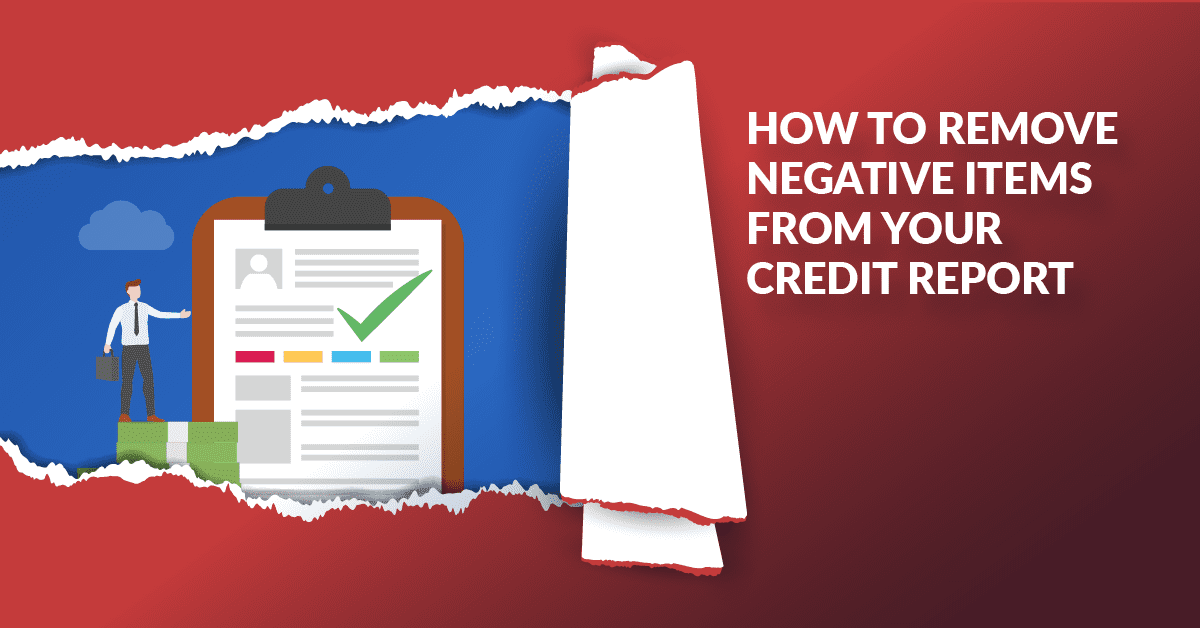
Your credit report plays a vital role in your financial life. It affects everything from getting a loan to securing a lower interest rate on a mortgage. Unfortunately, negative items like late payments, charge-offs, or collections can significantly lower your credit score. But don’t worry—there are ways to remove these negative items from your credit report and improve your financial standing.
In this guide, we’ll walk you through steps to clean up your credit report and boost your credit score.
1. Review Your Credit Report
The first step in removing negative items is to review your credit report for accuracy. You can get a free copy of your credit report from each of the three major credit bureaus (Experian, Equifax, and TransUnion) once a year at AnnualCreditReport.com.
Carefully check for:
- Incorrect personal information (name, address, etc.)
- Outdated accounts that should have been removed
- Duplicate entries
- Unauthorized accounts or signs of identity theft
2. Dispute Inaccurate Items
If you find an error, you have the right to dispute it. Here’s how to dispute inaccurate items:
- Contact the credit bureau reporting the incorrect information. You can file a dispute online, by mail, or by phone. Include any supporting documentation (such as account statements or proof of payment) that shows the information is incorrect.
- Wait for the bureau to investigate. By law, they have 30 days to investigate your claim and either verify, update, or remove the item.
- Follow up if needed. Sometimes disputes don’t go your way the first time, so stay persistent and follow up if necessary.
3. Negotiate with Creditors
If you have valid negative items, like late payments or collections, you can negotiate with creditors to potentially remove them. This process is called a “pay for delete” agreement, where you offer to pay off a debt in exchange for the removal of the negative entry from your credit report.
Here’s how it works:
- Contact the creditor or collection agency and propose the pay-for-delete arrangement.
- Get everything in writing. If the creditor agrees, make sure you get the agreement in writing before making any payments.
- Monitor your credit report. After payment, check your credit report to ensure the negative item has been removed as promised.
4. Send a Goodwill Letter
If you have a one-time late payment or other small negative items on your report, you can try sending a goodwill letter to the creditor. In this letter, you explain why you missed the payment and ask the creditor to remove the negative mark as a gesture of goodwill, especially if you’ve been a reliable customer otherwise.
Key tips for writing a goodwill letter:
- Be polite and explain your situation honestly.
- Mention your history of timely payments if applicable.
- Acknowledge your responsibility and express your desire to improve your credit standing.
5. Wait for Items to Age Off
Certain negative items will naturally fall off your credit report over time. Here’s how long some common negative marks typically remain:
- Late payments: 7 years from the date of the missed payment.
- Collections: 7 years from the original delinquency date.
- Bankruptcies: 7-10 years depending on the type.
- Charge-offs: 7 years from the date the creditor charged off the account.
While waiting isn’t the fastest option, time can eventually heal your credit report. In the meantime, focus on maintaining positive credit habits like on-time payments and low credit utilization.
6. Hire a Professional Credit Repair Service
If you find the process too overwhelming or if you have multiple negative items on your report, you may consider hiring a credit repair service. These services handle disputes, negotiations, and other steps on your behalf. While they can be helpful, make sure to choose a reputable company, and be wary of any service that promises a “quick fix” or guarantees to remove legitimate negative items.
7. Practice Good Credit Habits Moving Forward
Removing negative items is only part of the process. To keep your credit healthy, practice good habits going forward, such as:
- Paying bills on time: Late payments are one of the biggest factors in damaging your credit.
- Reducing credit card balances: Keep your credit utilization below 30% of your available limit.
- Monitoring your credit: Regularly check your credit report to ensure there are no new negative items or errors.
Conclusion
Removing negative items from your credit report can be a powerful way to improve your credit score and financial health. By reviewing your report, disputing inaccuracies, negotiating with creditors, and practicing good credit habits, you can take control of your credit profile and pave the way for better financial opportunities.
Remember, credit repair takes time, but with persistence, you can rebuild and strengthen your credit for a more secure financial future.
